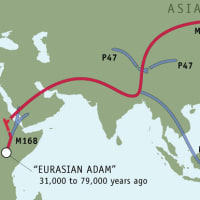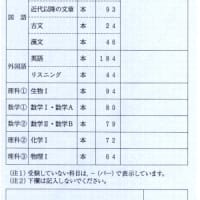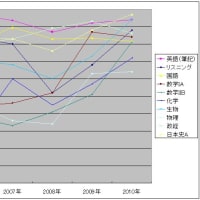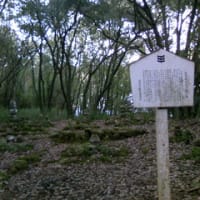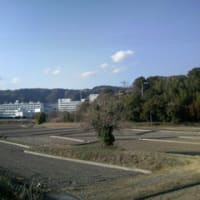原文も載せた。
翻訳結果はこっちで。
Your Y-chromosome results identify you as a member of haplogroup D2 (M64.1).
The genetic markers that define your ancestral history reach back roughly 60,000 years to the first common marker of all non-African men, M168, and follow your lineage to present day, ending with P37.1, the defining marker of haplogroup D2.
If you look at the map highlighting your ancestors' route, you will see that members of haplogroup D2 carry the following Y-chromosome markers:
M168 > YAP > M174 > P37.1
What's a haplogroup, and why do geneticists concentrate on the Y chromosome in their search for markers? For that matter, what's a marker?
Each of us carries DNA that is a combination of genes passed from both our mother and father, giving us traits that range from eye color and height to athleticism and disease susceptibility. One exception is the Y chromosome, which is passed directly from father to son, unchanged, from generation to generation.
Unchanged, that is unless a mutation―a random, naturally occurring, usually harmless change―occurs. The mutation, known as a marker, acts as a beacon; it can be mapped through generations because it will be passed down from the man in whom it occurred to his sons, their sons, and every male in his family for thousands of years.
In some instances, there may be more than one mutational event that defines a particular branch on the tree. This means that either of these markers can be used to determine your particular haplogroup, since every individual who has one of these markers also has the other. Therefore, either marker can be used as a genetic signpost leading us back to the origin of your group, guiding our understanding of what was happening at that early time.
When geneticists identify such a marker, they try to figure out when it first occurred, and in which geographic region of the world. Each marker is essentially the beginning of a new lineage on the family tree of the human race. Tracking the lineages provides a picture of how small tribes of modern humans in Africa tens of thousands of years ago diversified and spread to populate the world.
A haplogroup is defined by a series of markers that are shared by other men who carry the same random mutations. The markers trace the path your ancestors took as they moved out of Africa. It's difficult to know how many men worldwide belong to any particular haplogroup, or even how many haplogroups there are, because scientists simply don't have enough data yet.
One of the goals of the five-year Genographic Project is to build a large enough database of anthropological genetic data to answer some of these questions. To achieve this, project team members are traveling to all corners of the world to collect more than 100,000 DNA samples from indigenous populations. In addition, we encourage you to contribute your anonymous results to the project database, helping our geneticists reveal more of the answers to our ancient past.
Keep checking these pages; as more information is received, more may be learned about your own genetic history.
Your Ancestral Journey: What We Know Now
M168: Your Earliest Ancestor
Fast Facts
Time of Emergence: Roughly 50,000 years ago
Place of Origin: Africa
Climate: Temporary retreat of Ice Age; Africa moves from drought to warmer temperatures and moister conditions
Estimated Number of Homo sapiens: Approximately 10,000
Tools and Skills: Stone tools; earliest evidence of art and advanced conceptual skills
Skeletal and archaeological evidence suggest that anatomically modern humans evolved in Africa around 200,000 years ago, and began moving out of Africa to colonize the rest of the world around 60,000 years ago.
The man who gave rise to the first genetic marker in your lineage probably lived in northeast Africa in the region of the Rift Valley, perhaps in present-day Ethiopia , Kenya, or Tanzania, some 31,000 to 79,000 years ago. Scientists put the most likely date for when he lived at around 50,000 years ago. His descendants became the only lineage to survive outside of Africa, making him the common ancestor of every non-African man living today.
But why would man have first ventured out of the familiar African hunting grounds and into unexplored lands? It is likely that a fluctuation in climate may have provided the impetus for your ancestors' exodus out of Africa.
The African ice age was characterized by drought rather than by cold. It was around 50,000 years ago that the ice sheets of northern Europe began to melt, introducing a period of warmer temperatures and moister climate in Africa. Parts of the inhospitable Sahara briefly became habitable. As the drought-ridden desert changed to a savanna, the animals hunted by your ancestors expanded their range and began moving through the newly emerging green corridor of grasslands. Your nomadic ancestors followed the good weather and the animals they hunted, although the exact route they followed remains to be determined.
In addition to a favorable change in climate, around this same time there was a great leap forward in modern humans' intellectual capacity. Many scientists believe that the emergence of language gave us a huge advantage over other early human species. Improved tools and weapons, the ability to plan ahead and cooperate with one another, and an increased capacity to exploit resources in ways we hadn't been able to earlier, all allowed modern humans to rapidly migrate to new territories, exploit new resources, and replace other hominids.
YAP: An Ancient Mutation
Fast Facts
Time of Emergence: Roughly 50,000 years ago
Place of Origin: Africa
Climate: Temporary retreat of Ice Age; Africa moves from drought to warmer temperatures and moister conditions
Estimated Number of Homo sapiens: Approximately 10,000
Tools and Skills: Stone tools; earliest evidence of art and advanced conceptual skills
Sub-Saharan populations living today are characterized by one of three distinct Y-chromosome branches on the human tree. Your paternal lineage falls under one of these ancient branches and is referred to by geneticists as YAP.
YAP occurred around northeast Africa and is the most common of the three ancient genetic branches found in sub-Saharan Africa. It is characterized by a mutational event known as an Alu insertion, a 300-nucleotide fragment of DNA which, on rare occasion, gets inserted into different parts of the human genome during cell replication.
A man living around 50,000 years ago, your distant ancestor, acquired this fragment on his Y-chromosome and passed it on to his descendants. Over time this lineage split into two distinct groups. One is found primarily in Africa and the Mediterranean is defined by marker M96. The other group is found in Asia and defined by the M174 mutation.
Your genetic lineage lies within the group that remained close to home, and was carried by men who likely played an integral role in recent cultural and migratory events within Africa.
M174: Taking the Coastal Route
Fast Facts
Time of Emergence: Roughly 50,000 years ago
Place of Origin: Africa
Climate: Temporary retreat of Ice Age; Africa moves from drought to warmer temperatures and moister conditions
Estimated Number of Homo sapiens: Approximately 10,000
Tools and Skills: Stone tools; earliest evidence of art and advanced conceptual skills
Your ancestors may have accompanied another group, the Coastal Clan (M130) on the first major wave of migration out of Africa around 50,000 years ago. Taking advantage of the plentiful seaside resources, these intrepid explorers followed the coastline of Africa through the southern Arabian Peninsula, India, Sri Lanka, and Southeast Asia.
Alternatively, they may have made the trek at a later time, following in the footsteps of the Coastal Clan. Pockets of your ancestors still live along this ancient route, particularly in Southeast Asia and the Andaman Islands, but not in India.
Distribution of your ancestors also suggests two later migrations. The first carried your ancestors north along the East Asian coast into Japan. A more recent migration, taking place within the last several thousand years, brought descendants of this lineage into Tibet from Mongolia.
P37.1: Land of the Rising Sun
Fast Facts
Time of Emergence: Roughly 30,000 years ago
Place of Origin: Southeast Asia
Climate: Ice Age
Estimated Number of Homo sapiens: 100,000
Tools and Skills: Stone tools; Upper Paleolithic
About 30,000 years ago one of your Southeast Asian ancestors first displayed the genetic marker known as P37.1. Today that marker defines the haplogroup D2 and identifies you as a descendent of the M174 migrants who undertook a gradual northward migration.
From its Southeast Asian origins the D2 lineage moved steadily to the northeast and eventually reached Japan. Today the haplogroup is most common in that island nation―occurring at frequencies of 50 percent in some Japanese populations.
This is where your genetic trail, as we know it today, ends. However, be sure to revisit these pages. As additional data are collected and analyzed, more will be learned about your place in the history of the men and women who first populated the Earth. We will be updating these stories throughout the life of the project.
翻訳結果はこっちで。
Your Y-chromosome results identify you as a member of haplogroup D2 (M64.1).
The genetic markers that define your ancestral history reach back roughly 60,000 years to the first common marker of all non-African men, M168, and follow your lineage to present day, ending with P37.1, the defining marker of haplogroup D2.
If you look at the map highlighting your ancestors' route, you will see that members of haplogroup D2 carry the following Y-chromosome markers:
M168 > YAP > M174 > P37.1
What's a haplogroup, and why do geneticists concentrate on the Y chromosome in their search for markers? For that matter, what's a marker?
Each of us carries DNA that is a combination of genes passed from both our mother and father, giving us traits that range from eye color and height to athleticism and disease susceptibility. One exception is the Y chromosome, which is passed directly from father to son, unchanged, from generation to generation.
Unchanged, that is unless a mutation―a random, naturally occurring, usually harmless change―occurs. The mutation, known as a marker, acts as a beacon; it can be mapped through generations because it will be passed down from the man in whom it occurred to his sons, their sons, and every male in his family for thousands of years.
In some instances, there may be more than one mutational event that defines a particular branch on the tree. This means that either of these markers can be used to determine your particular haplogroup, since every individual who has one of these markers also has the other. Therefore, either marker can be used as a genetic signpost leading us back to the origin of your group, guiding our understanding of what was happening at that early time.
When geneticists identify such a marker, they try to figure out when it first occurred, and in which geographic region of the world. Each marker is essentially the beginning of a new lineage on the family tree of the human race. Tracking the lineages provides a picture of how small tribes of modern humans in Africa tens of thousands of years ago diversified and spread to populate the world.
A haplogroup is defined by a series of markers that are shared by other men who carry the same random mutations. The markers trace the path your ancestors took as they moved out of Africa. It's difficult to know how many men worldwide belong to any particular haplogroup, or even how many haplogroups there are, because scientists simply don't have enough data yet.
One of the goals of the five-year Genographic Project is to build a large enough database of anthropological genetic data to answer some of these questions. To achieve this, project team members are traveling to all corners of the world to collect more than 100,000 DNA samples from indigenous populations. In addition, we encourage you to contribute your anonymous results to the project database, helping our geneticists reveal more of the answers to our ancient past.
Keep checking these pages; as more information is received, more may be learned about your own genetic history.
Your Ancestral Journey: What We Know Now
M168: Your Earliest Ancestor
Fast Facts
Time of Emergence: Roughly 50,000 years ago
Place of Origin: Africa
Climate: Temporary retreat of Ice Age; Africa moves from drought to warmer temperatures and moister conditions
Estimated Number of Homo sapiens: Approximately 10,000
Tools and Skills: Stone tools; earliest evidence of art and advanced conceptual skills
Skeletal and archaeological evidence suggest that anatomically modern humans evolved in Africa around 200,000 years ago, and began moving out of Africa to colonize the rest of the world around 60,000 years ago.
The man who gave rise to the first genetic marker in your lineage probably lived in northeast Africa in the region of the Rift Valley, perhaps in present-day Ethiopia , Kenya, or Tanzania, some 31,000 to 79,000 years ago. Scientists put the most likely date for when he lived at around 50,000 years ago. His descendants became the only lineage to survive outside of Africa, making him the common ancestor of every non-African man living today.
But why would man have first ventured out of the familiar African hunting grounds and into unexplored lands? It is likely that a fluctuation in climate may have provided the impetus for your ancestors' exodus out of Africa.
The African ice age was characterized by drought rather than by cold. It was around 50,000 years ago that the ice sheets of northern Europe began to melt, introducing a period of warmer temperatures and moister climate in Africa. Parts of the inhospitable Sahara briefly became habitable. As the drought-ridden desert changed to a savanna, the animals hunted by your ancestors expanded their range and began moving through the newly emerging green corridor of grasslands. Your nomadic ancestors followed the good weather and the animals they hunted, although the exact route they followed remains to be determined.
In addition to a favorable change in climate, around this same time there was a great leap forward in modern humans' intellectual capacity. Many scientists believe that the emergence of language gave us a huge advantage over other early human species. Improved tools and weapons, the ability to plan ahead and cooperate with one another, and an increased capacity to exploit resources in ways we hadn't been able to earlier, all allowed modern humans to rapidly migrate to new territories, exploit new resources, and replace other hominids.
YAP: An Ancient Mutation
Fast Facts
Time of Emergence: Roughly 50,000 years ago
Place of Origin: Africa
Climate: Temporary retreat of Ice Age; Africa moves from drought to warmer temperatures and moister conditions
Estimated Number of Homo sapiens: Approximately 10,000
Tools and Skills: Stone tools; earliest evidence of art and advanced conceptual skills
Sub-Saharan populations living today are characterized by one of three distinct Y-chromosome branches on the human tree. Your paternal lineage falls under one of these ancient branches and is referred to by geneticists as YAP.
YAP occurred around northeast Africa and is the most common of the three ancient genetic branches found in sub-Saharan Africa. It is characterized by a mutational event known as an Alu insertion, a 300-nucleotide fragment of DNA which, on rare occasion, gets inserted into different parts of the human genome during cell replication.
A man living around 50,000 years ago, your distant ancestor, acquired this fragment on his Y-chromosome and passed it on to his descendants. Over time this lineage split into two distinct groups. One is found primarily in Africa and the Mediterranean is defined by marker M96. The other group is found in Asia and defined by the M174 mutation.
Your genetic lineage lies within the group that remained close to home, and was carried by men who likely played an integral role in recent cultural and migratory events within Africa.
M174: Taking the Coastal Route
Fast Facts
Time of Emergence: Roughly 50,000 years ago
Place of Origin: Africa
Climate: Temporary retreat of Ice Age; Africa moves from drought to warmer temperatures and moister conditions
Estimated Number of Homo sapiens: Approximately 10,000
Tools and Skills: Stone tools; earliest evidence of art and advanced conceptual skills
Your ancestors may have accompanied another group, the Coastal Clan (M130) on the first major wave of migration out of Africa around 50,000 years ago. Taking advantage of the plentiful seaside resources, these intrepid explorers followed the coastline of Africa through the southern Arabian Peninsula, India, Sri Lanka, and Southeast Asia.
Alternatively, they may have made the trek at a later time, following in the footsteps of the Coastal Clan. Pockets of your ancestors still live along this ancient route, particularly in Southeast Asia and the Andaman Islands, but not in India.
Distribution of your ancestors also suggests two later migrations. The first carried your ancestors north along the East Asian coast into Japan. A more recent migration, taking place within the last several thousand years, brought descendants of this lineage into Tibet from Mongolia.
P37.1: Land of the Rising Sun
Fast Facts
Time of Emergence: Roughly 30,000 years ago
Place of Origin: Southeast Asia
Climate: Ice Age
Estimated Number of Homo sapiens: 100,000
Tools and Skills: Stone tools; Upper Paleolithic
About 30,000 years ago one of your Southeast Asian ancestors first displayed the genetic marker known as P37.1. Today that marker defines the haplogroup D2 and identifies you as a descendent of the M174 migrants who undertook a gradual northward migration.
From its Southeast Asian origins the D2 lineage moved steadily to the northeast and eventually reached Japan. Today the haplogroup is most common in that island nation―occurring at frequencies of 50 percent in some Japanese populations.
This is where your genetic trail, as we know it today, ends. However, be sure to revisit these pages. As additional data are collected and analyzed, more will be learned about your place in the history of the men and women who first populated the Earth. We will be updating these stories throughout the life of the project.










